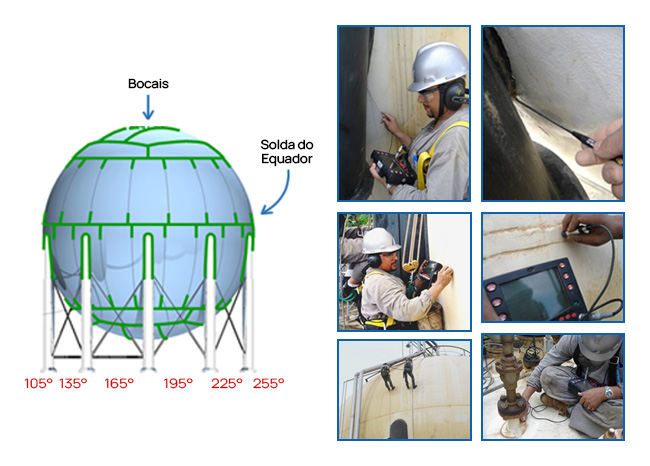EC - CRACKS
Examination of plates, joints and welds (heat-affected zones (HAZs) and their surroundings) of virtually all metallic materials used in industry, such as carbon steels, low-alloy steels, austenitic stainless steels, aluminum, copper and titanium ( and their alloys) in virtually all types of metallic equipment, such as pressure vessels, boilers, piping, aircraft, bridges, oil platforms, submarines and large metallic structures.
The technique is versatile and the equipment used for examination in the field is light, resistant and practical, which allows its application in places of difficult access, from small crevices and holes to underwater inspections. There is a wide variety of probes and cables up to 100 meters in length. The exam can be performed on layers of paint and on surfaces without rigorous preparation, in addition to dispensing with utilities such as electricity, compressed air and water at the exam site. The eddy-current method is approved by the European community and qualified by PNC and ASNT. Weld examination is carried out in accordance with EN BS 1711:2000.

MAIN ADVANTAGES
– Less demanding surface preparation;
– Does not require paint removal;
– Does not require consumables;
– Does not require utilities (water, energy or compressed air);
– Fast, clean and effective process;
– Faster than magnetic particles and liquid penetrant;
– Allows recording of calibration and inspection, and consequently the monitoring of the evolution of discontinuities;
– Advantages under ACFM / Penetrant Liquid and Magnetic Particle tests (see additional documents “ACFM x EC” and “EC x PM_LP”.
